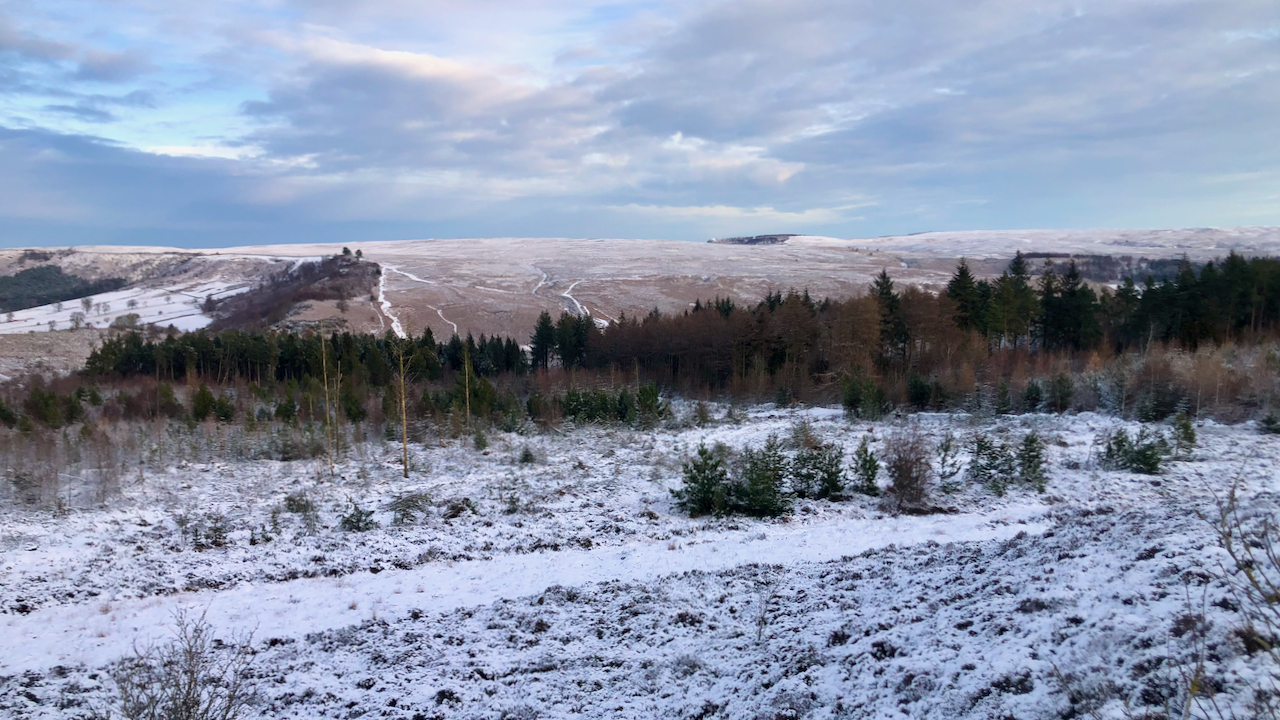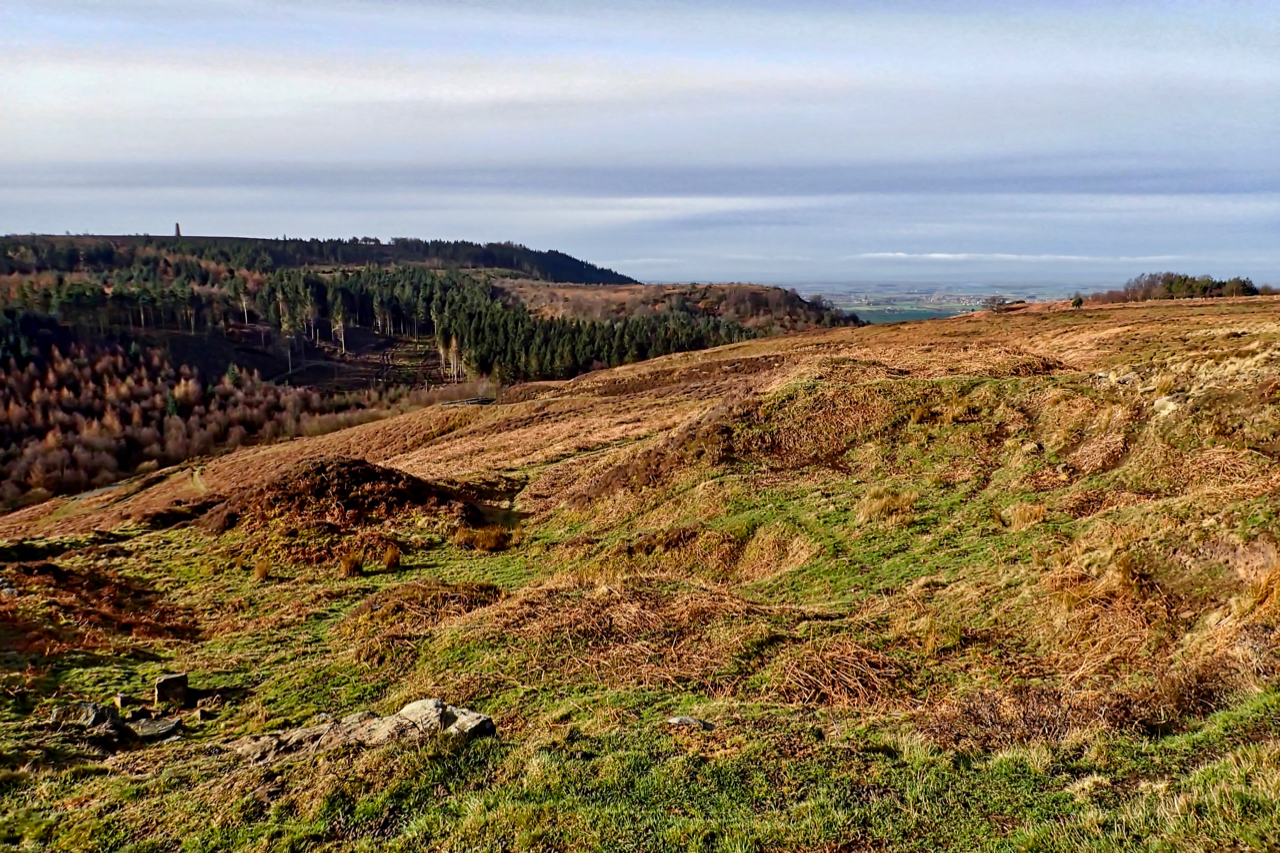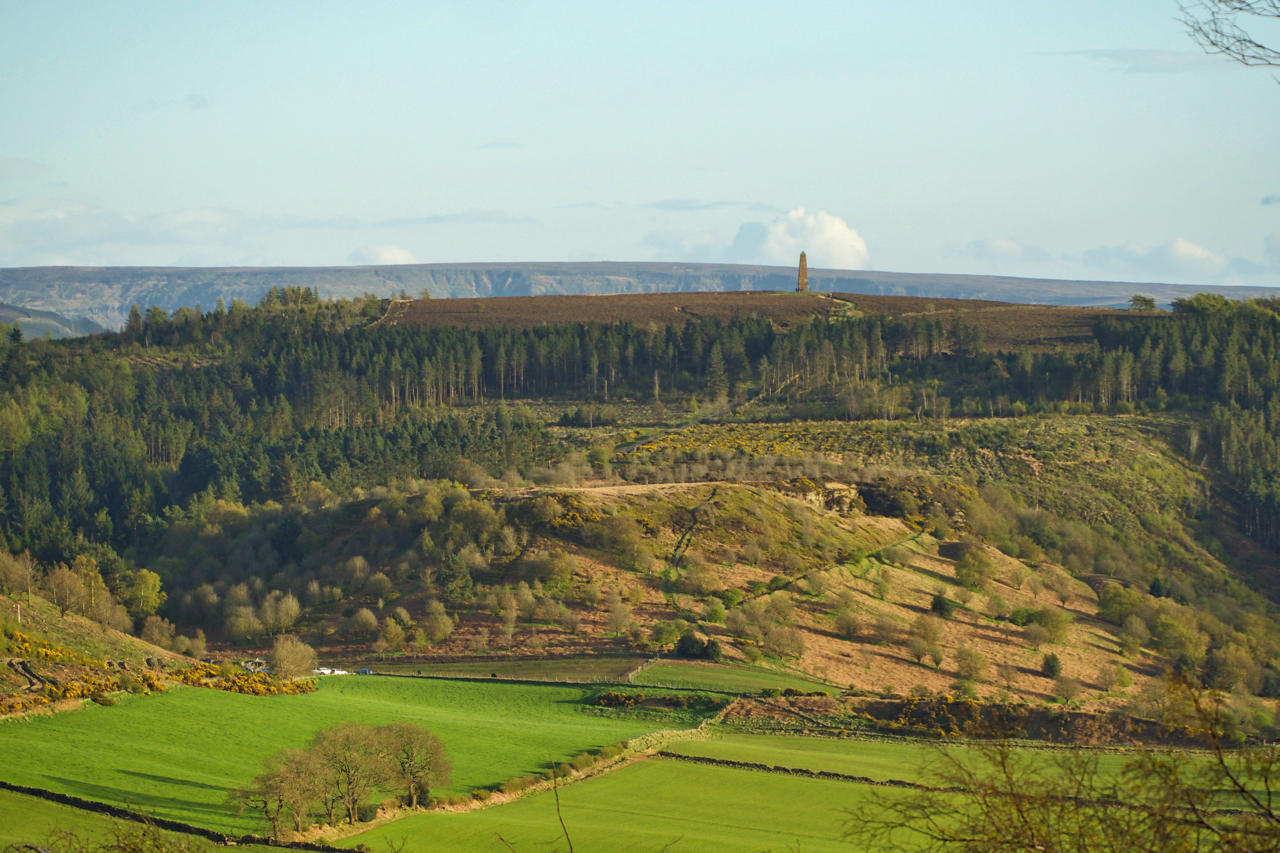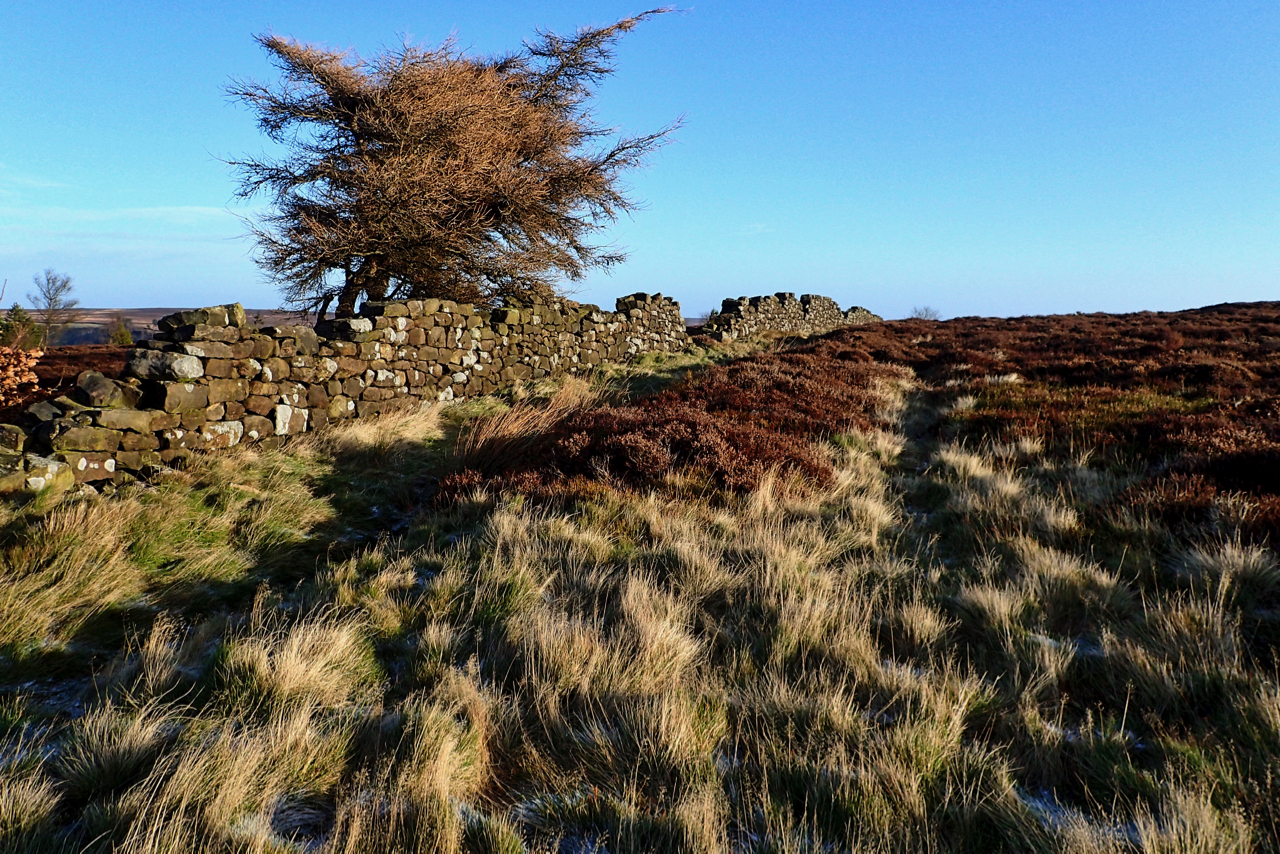Category: Little Ayton Moor
-

A Swathe of Purple: Bell Heather in Full Bloom
The North York Moors hold England’s largest stretch of upland heather moorland, renowned for their late summer display of heather. Come August, the moors will be briefly blanketed by the lilac hues of Ling, or Calluna vulgaris. Another heather, Erica cinerea or Bell heather, blooms in a richer purple from June to September, adorning the…
-

Clear felling on Little Ayton Moor has opened up super views across Great Ayton Moor all the way to Highcliff Nab
A light overnight snowfall hides the debris from the forestry work. I guess the remainder of the forestry will go in due course. Great Ayton Moor has a wealth of archaeological features which I’ve posted about many times before. A chambered cairn, a cairnfield , an Iron Age enclosure, and numerous tumuli. Elgee thought that…
-

Gribdale Gate
I have never really understood where Gribdale is. The oldest Ordnance Survey map marks Gribdale Gate as the col between Little Ayton and Great Ayton Moors. There is a Gribdale Plantation but apart from that, there is no other mention of the name, and there is no resemblance of a dale on the Great Ayton…
-

Capt. Cook’s Monument and Cockshaw Hill
Late evening view of Captain Cook’s Monument, in this 250th year since Cook set out on his first voyage. Beneath the monument the commercial plantation of Little Ayton Moor, and below that, Cockshaw Hil,l with its disused sandstone quarry. Across the lush green fields, the line of the whinstone intrusion of the Cleveland Dyke can…
-

Ruined wall, Easby Bank
No snow on the North York Moors, well maybe a just a skith, as some Southerners would say, a light dusting, barely enough to cover the paths. But very cold through with a bitter, lazy wind. Lazy because it goes straight through you without swirling around. The wall divides Little Ayton Moor and Easby Moor…